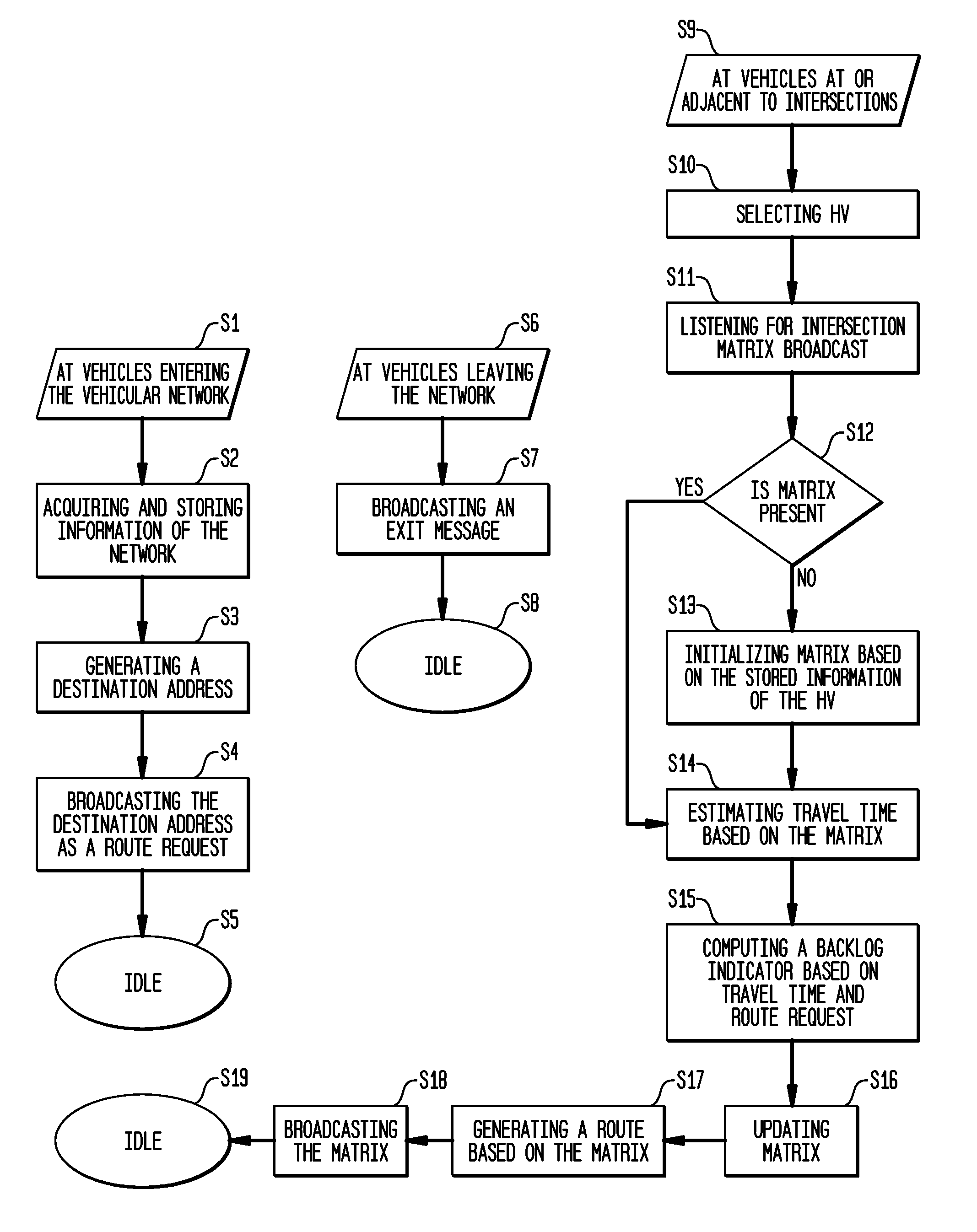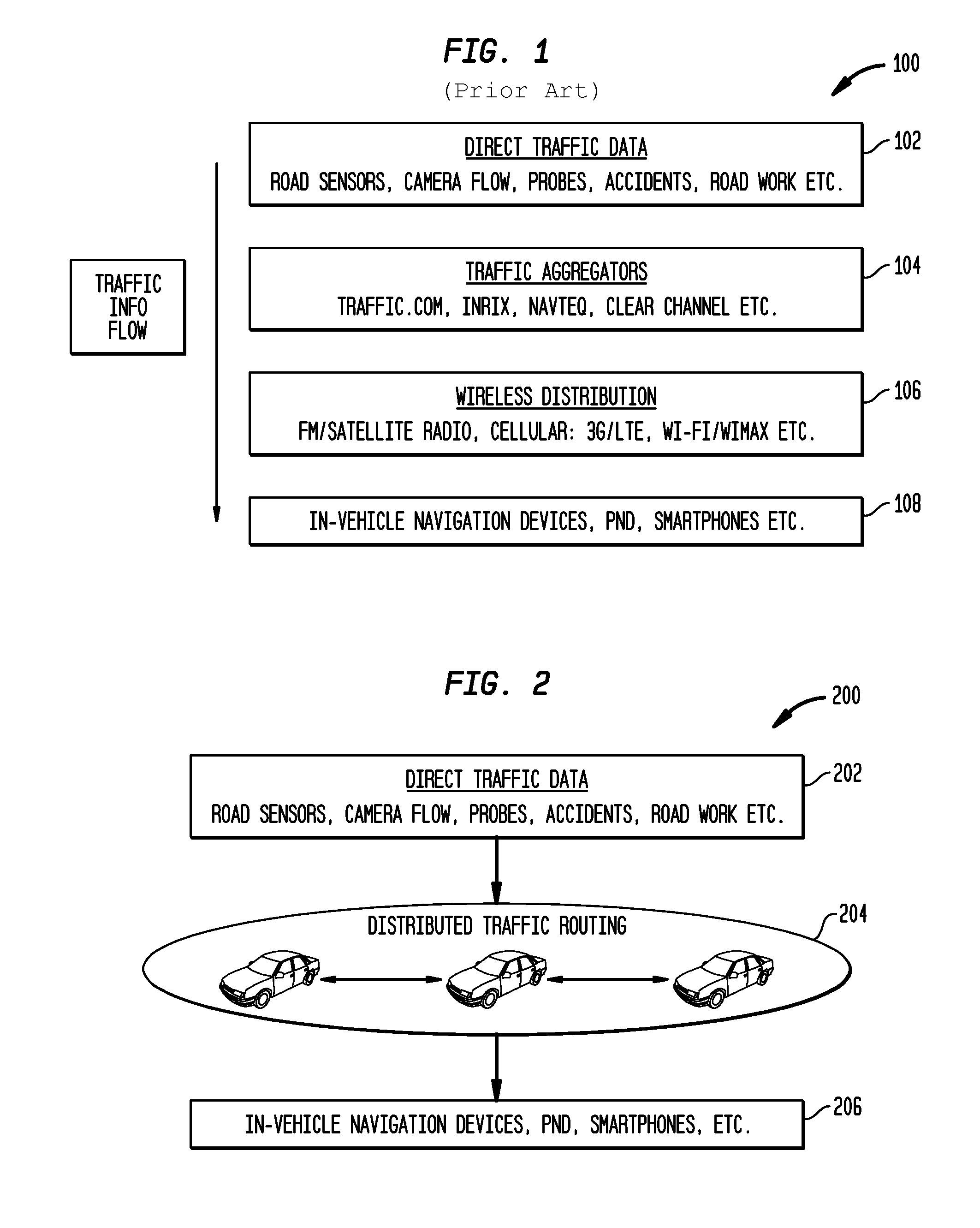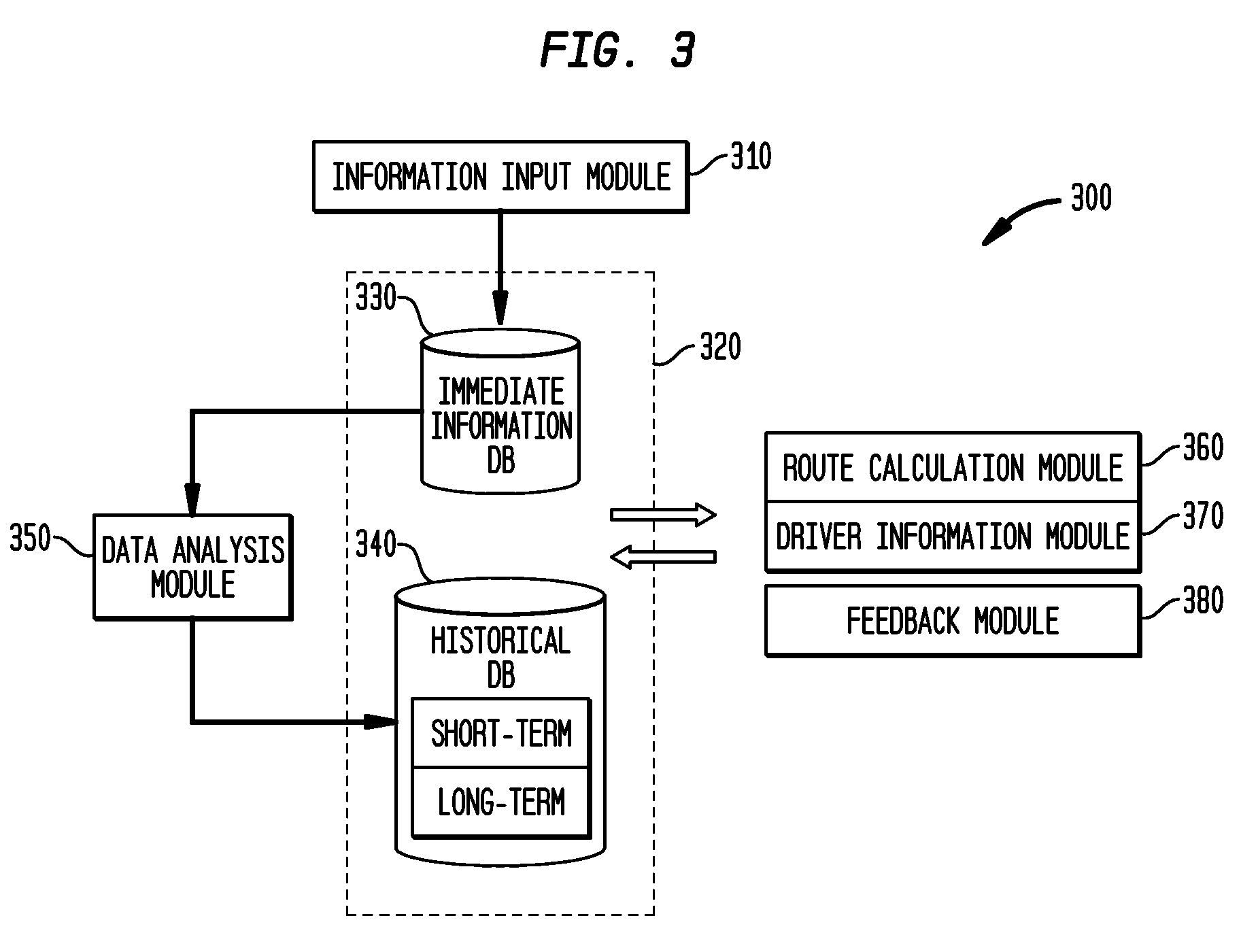Distributed traffic navigation using vehicular communication
a technology of vehicular communication and traffic navigation, applied in the field of automobility telematics, can solve the problems of limited traffic information on main roads, significant cost in time, money and influence on the environment, and information related to the spillage of traffic onto arterial and side roads is barely availabl
- Summary
- Abstract
- Description
- Claims
- Application Information
AI Technical Summary
Benefits of technology
Problems solved by technology
Method used
Image
Examples
Embodiment Construction
[0022]The present invention advantageously provides a distributed vehicle traffic navigation system and method for calculating routes with minimum travel time for vehicles on roadways.
[0023]FIG. 2 illustrates an architectural diagram of a distributed vehicle traffic navigation system 200 through vehicle to vehicle communication, according to an exemplary embodiment of the present invention. The system 200 includes a data acquisition layer 202 for collecting traffic data from road sensors, cameras, probes and the like. The collected data can be related to accidents, roadwork and so on. The system 200 further includes a distributed traffic data routing layer 204, in which the traffic data is communicated and exchanged between vehicles, without incurring centralized aggregation of all traffic-related data. In this manner, local information can be acquired to enhance the ability of the system to manage and navigate traffic data. The device layer 206 includes in-vehicle navigation device...
PUM
 Login to View More
Login to View More Abstract
Description
Claims
Application Information
 Login to View More
Login to View More - R&D
- Intellectual Property
- Life Sciences
- Materials
- Tech Scout
- Unparalleled Data Quality
- Higher Quality Content
- 60% Fewer Hallucinations
Browse by: Latest US Patents, China's latest patents, Technical Efficacy Thesaurus, Application Domain, Technology Topic, Popular Technical Reports.
© 2025 PatSnap. All rights reserved.Legal|Privacy policy|Modern Slavery Act Transparency Statement|Sitemap|About US| Contact US: help@patsnap.com



